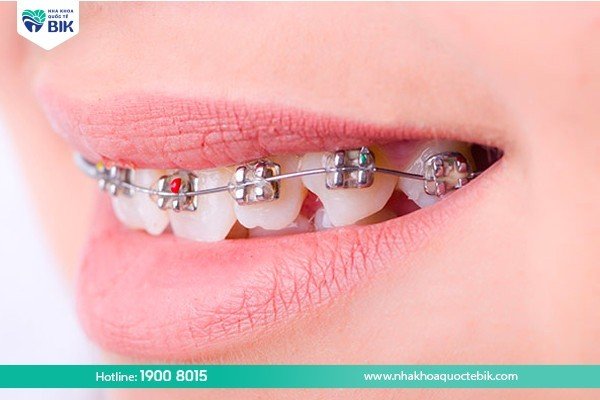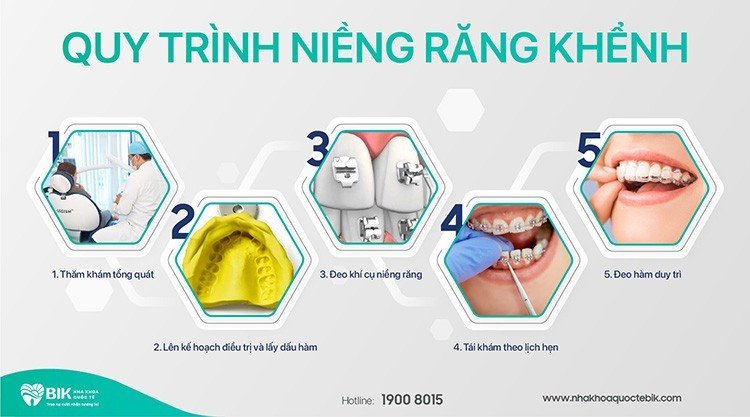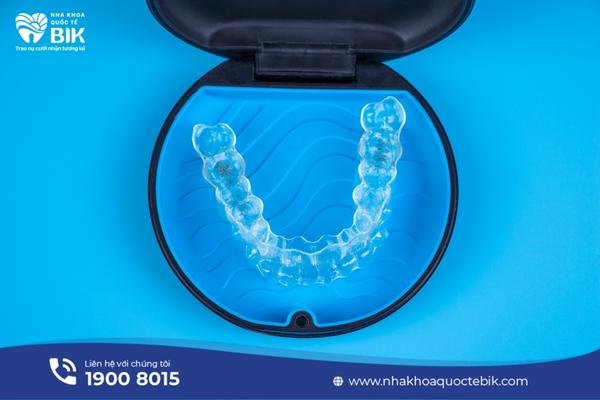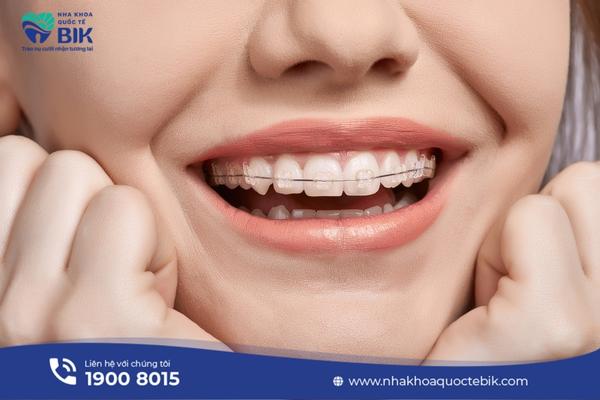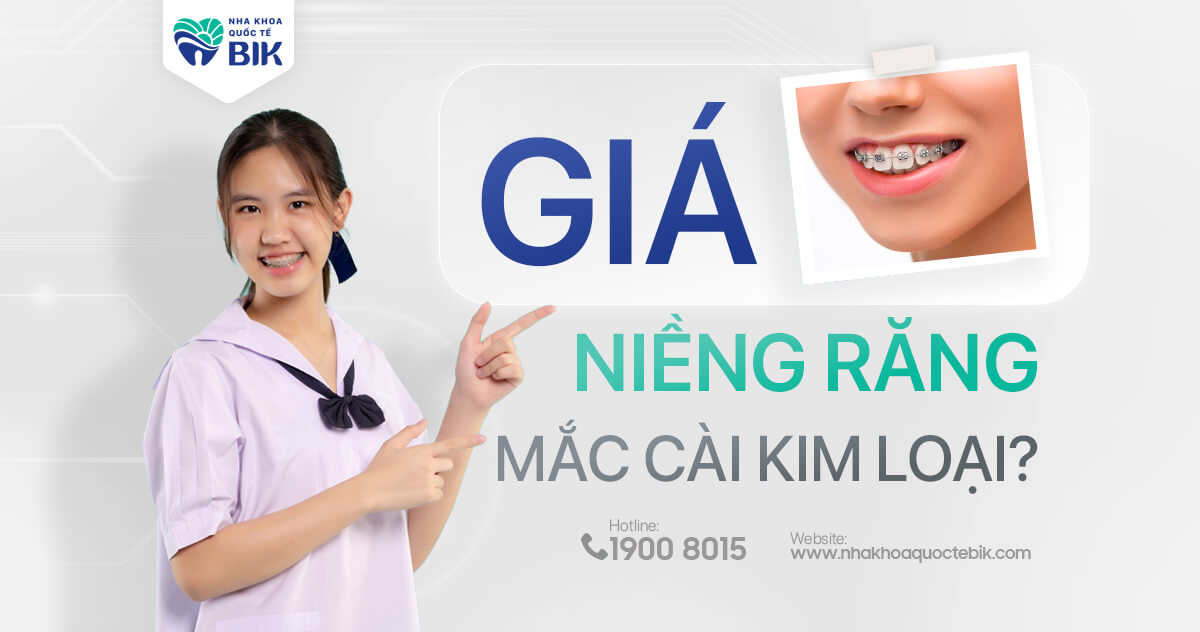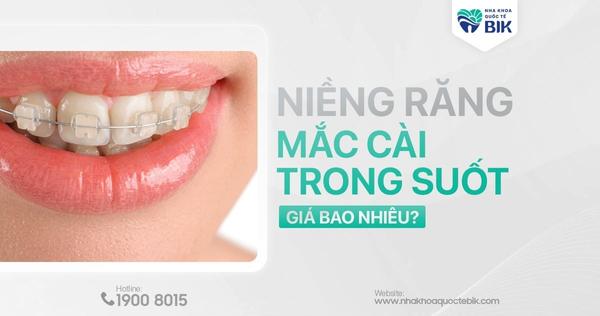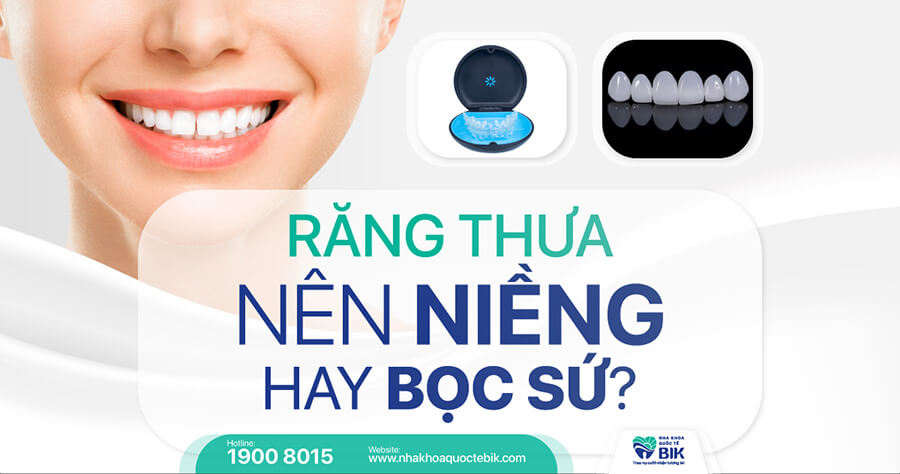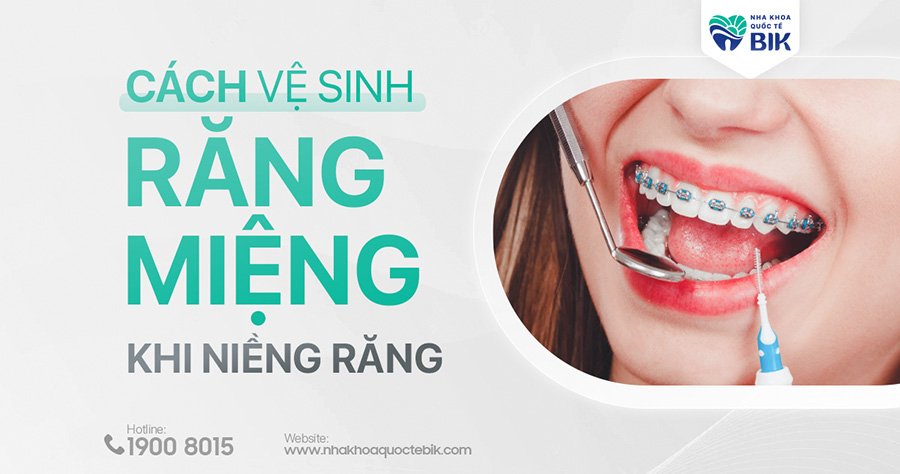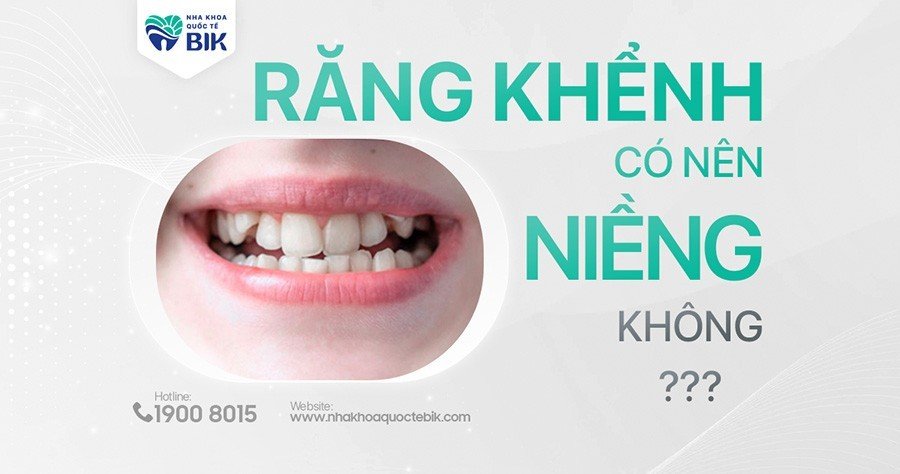
In Eastern countries, crooked teeth have long been considered a symbol of a charming smile and will bring good luck to the owner. Whether or not to straighten crooked teeth depends on how much they affect you. If this tooth affects your bite, your ability to chew, and increases the risk of other oral diseases, you should straighten your crooked teeth as soon as possible.
1. What is a canine tooth brace?
A canine tooth is the tooth located at position 3 in the canine group that has the function of tearing food. It is called a canine tooth because it grows out of the dental arch for many reasons. A canine tooth usually has 1 root, a small slanted shape and usually grows between the ages of 12 and 13 during the permanent teeth growth process.
In each country, the meaning of a canine tooth is also understood differently. In Western countries, crooked teeth are considered a sign of evil spirits, not bringing luck to the owner or their relatives. Meanwhile, Eastern countries highly appreciate the charming beauty of crooked teeth. People with crooked teeth are considered lucky, often have a lively, cheerful personality, have positive energy and can easily achieve happiness and success in work and life.
Crooked teeth braces are an orthodontic method that uses tightening force from orthodontic appliances such as archwire systems, brackets or clear braces to help teeth move on the jaw, including crooked teeth, to the desired position.
2. Do crooked teeth cause any effects?
Although crooked teeth bring undeniable charm to their owners, technically speaking, they are just teeth that grow out of the jaw and can cause some of the following effects:
2.1. Difficulty in oral hygiene
When a crooked tooth is crooked and tilted outward, it often creates a fairly deep gap with the adjacent tooth number 2. This is where food gets stuck easily and is difficult to clean. Food scraps that are not cleaned for a long time will cause an unpleasant odor to the breath. Over time, tartar will form and from there bacteria will also multiply and attack the gums and teeth, causing some oral diseases such as tooth decay, gingivitis, periodontitis, etc.
2.2. Affects the ability to chew
Belonging to the canine group, canine teeth play a very important role when chewing. Teeth that grow outward a lot also reduce the ability to chew and tear food. Food is not crushed before entering the stomach, causing the digestive system to work harder than usual. This happening over a long period of time can lead to some diseases such as stomach pain, digestive disorders, etc.
3. Should I get braces for canine teeth?
As analyzed above, although it cannot be denied that canine teeth bring charm to the smile of anyone who owns them, in reality they are just misaligned teeth that cause misaligned bites. If canine teeth grow too much, it will cause difficulty in chewing and oral hygiene. The position of canine teeth that is not cleaned regularly will increase the risk of other oral diseases.
To know whether canine teeth should be braced, you need to determine the benefits and harms that this tooth can bring. If canine teeth do not make the cheekbones high, do not affect the position of the remaining teeth on the jaw, then keeping canine teeth to have a more charming and impressive smile is fine.
On the contrary, customers should have canine teeth braced if they tend to protrude too much, the remaining teeth grow crookedly and do not have a standard bite, hindering chewing. From there, overall health is affected quite a bit.
4. Current methods of braces for protruding teeth and prices
Customers can choose one of the following methods to start the treatment of protruding teeth:
4.1. Conventional metal braces
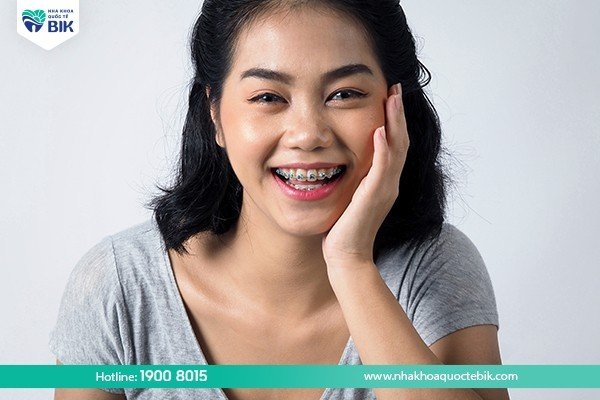
As a traditional method that has been around for a long time, metal braces often use a system of archwires and brackets made of metal to create a tightening force to help the teeth move to the desired position on the jaw. Fixed on the teeth and thanks to the hardness of the material, the force created is very stable, helping the braces process take place more quickly.
Despite the advantages of orthodontic effectiveness, in reality, people are still quite hesitant to choose this method because the aesthetics are not high. Because the color of the metal is quite different from the color of real teeth, many people feel unconfident when smiling to reveal braces.
Metal braces currently cost from 30,000,000 – 45,000,000 VND/ 1 course.
4.2. Traditional ceramic braces
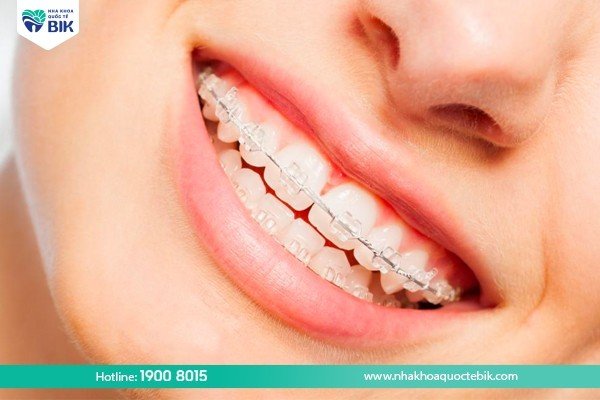
With the same operating mechanism as traditional metal braces, this method also uses the tightening force of the archwire and traditional braces to help the teeth move to the correct position, correcting the situation of protruding teeth causing misaligned bite. The difference is that the braces are now made from high-quality ceramic material with the same color as real teeth, so they can bring higher aesthetics. That is why people today often prioritize choosing ceramic braces.
The cost of ceramic braces ranges from 40,000,000 – 55,000,000 VND/ 1 course.
4.3. Self-ligating braces
Self-ligating braces also use a system of archwires and brackets to help correct misaligned teeth, but the archwire will now be fixed on the bracket groove by an automatic sliding cover system. The orthodontic appliance of this method can be made of ceramic or metal depending on the needs of the customer. This structure allows the archwire to slide freely according to the movement of the teeth, which means that the tightening force will be created automatically, continuously and stably without the help of a doctor.
Self-ligating braces cost from 35,000,000 – 55,000,000 VND/ 1 course depending on the method you choose.
4.4. Invisalign clear braces
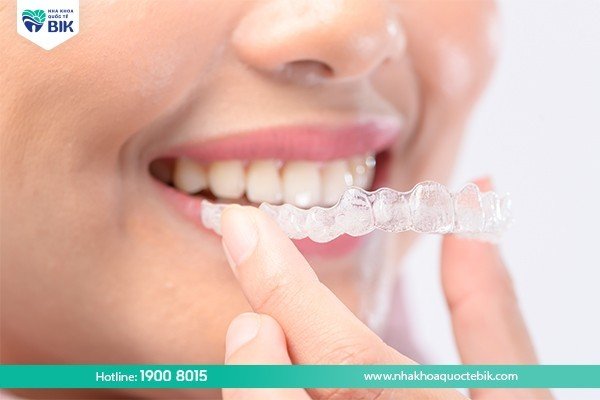
Invisalign clear braces were pioneered by Align Technology from the United States. Instead of a complex wire and bracket system, the orthodontic appliance of this method is an orthodontic tray made of high-quality transparent plastic.
Invisalign clear braces will be designed to be personalized to fit the gums and hug the teeth of each person, so they will become almost invisible when worn. Therefore, this is the optimal choice for people with high aesthetic needs while wearing braces. In addition, the smooth, smooth surface of the braces will also prevent soft tissues such as cheeks and tongue from being accidentally injured or bleeding in the beginning when they are not used to braces such as braces.
Completely overcoming the disadvantages of traditional orthodontic methods, Invisalign clear braces cost from 80,000,000 – 140,000,000 VND/ 1 course.
5. Braces procedure for protruding teeth
The process of braces for canine teeth includes the following basic steps:
5.1. General examination
First, the doctor will conduct a general examination of oral health with the naked eye. After that, the customer will have an X-ray taken to obtain accurate data on the condition of the teeth. From the results obtained, the doctor can know whether the canine teeth can be braced or not as well as assess the specific condition to help the treatment more accurately.
5.2. Treatment plan and jaw impression
Based on the examination and X-ray, the doctor will propose a suitable plan for braces for canine teeth as well as provide specific advice on braces methods and specific costs. If the customer agrees to the treatment, the doctor will take a tooth impression to make braces or clear aligners.
5.3. Wearing braces
In case the customer has oral diseases such as periodontitis, tooth decay, etc., they will be completely treated so that the braces process is most effective. After that, the doctor will fix the braces and archwires on the teeth or will instruct the use of clear braces if the customer chooses the Invisalign braces method.
5.4. Re-examination according to the appointment schedule
Throughout the orthodontic treatment, the customer needs to go to the dentist for a re-examination according to the doctor’s appointment schedule to check the level of tooth movement as well as adjust the tightening force of the archwire. Normally, the doctor will schedule a re-examination once a month.
5.5. Wearing a retainer
After the teeth have returned to the desired position on the jaw, the braces will be removed and the customer needs to continue wearing the retainer for 1-2 years to fix the position of the teeth to avoid affecting the treatment results.
6. How long does it take to straighten crooked teeth?
Usually, orthodontic treatment lasts about 1.5 years to 3 years depending on many other factors. The less misaligned the teeth are, the less time it will take to help the teeth move back to the correct position on the jaw. In addition, if you have oral diseases, it will also prolong the time of braces because they need to be treated before starting orthodontics.
If you choose to have metal braces, the time can be shortened from 3-6 months thanks to the strong, continuous and stable tightening force. In addition, customers also have to wear a retainer for 1-2 years after removing the braces to help the teeth maintain the desired position.
Crooked teeth are believed to bring good luck in the culture of Eastern countries, however, in the case that this tooth grows too much, affecting the bite, leading to some other health problems, you should have braces to fix it. BIK International Dental Clinic is proud to be the choice of many customers both domestically and internationally when they need braces – orthodontics with a commitment to bring the best results.



